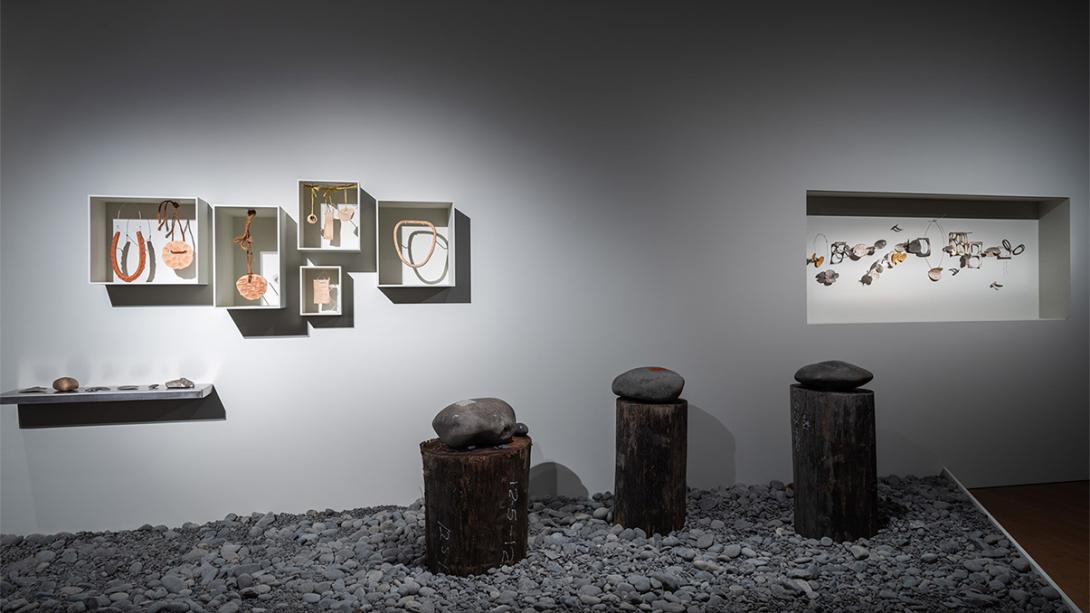Areta Wilkinson
APT9
Born 1969 Kaitaia, Aotearoa New Zealand
Lives and works in Oxford, Aotearoa New Zealand
Areta Wilkinson’s practice explores whakapaipai concepts of Māori personal adornment in the context of bicultural New Zealand. She is concerned with histories of contact, geneaologies and knowledge, as well as drawing maker connections between the cultural production of her ancestors and her own objects. Her recent work represents an ongoing investigation into the history of Māori wearable taonga (treasure or prized possession) in regard to her iwi (community) in Te Waipounamu, the South Island. Her objects include references to moa bones. Moa were flightless birds once endemic to New Zealand that became extinct in the pre-colonial era. Wilkinson as a moa hunter descendant rescues personal adornment from the domain of systematic archaeology practiced by Museums. Inspired by her research into the customary tools, materials and objects her ancestors manufactured, Wilkinson applies stone technologies and ‘archaic’ tools in an activity of recalling, drawing on customary forms and traditional methods to create new forms.

Areta Wilkinson / Ngai Tahu b.1969 / Whakapapa I–IV 2018 installed at GOMA for APT9, 2018 / © Areta Wilkinson and Two Rooms Gallery, Auckland / Photograph: Natasha Harth, QAGOMA
Known for her contemporary jewellery, Areta Wilkinson (Ngāi Tahu) explores personal adornment and object-making in relation to mātauranga Māori (Māori knowledge systems) in the context of Aotearoa New Zealand.
Her series called ‘Moa-hunter Fashions’ 2018 reflects on mahinga kai, historic sites of cultural production, specifically the lands of her Ngāi Tahu ancestors in Te Waipounamu, the South Island of New Zealand. Using river stones from the Waimakariri and Rakahuri Rivers near her home as hammer stones, Wilkinson creates adornments connected to past methods of making. Other implements are 3D-printed tools that are replicas of original objects in the collection of the Museum of Archaeology and Anthropology at the University of Cambridge. These objects were sourced from mahinga kai sites from the Moa-hunter era of Māori culture. Employing implements that have been created using the earliest and latest technologies, Wilkinson has shaped and marked materials that are the land, including fine metals and local clay.
In the process of creating ‘Moa-hunter Fashions’, Wilkinson reclaims European-based museum processes and highlights traditional sites and materials involved in the creation of artworks. Working with concepts of whakapapa (genealogy), tools, technology and memory, Wilkinson carries ancestral meaning forward.
